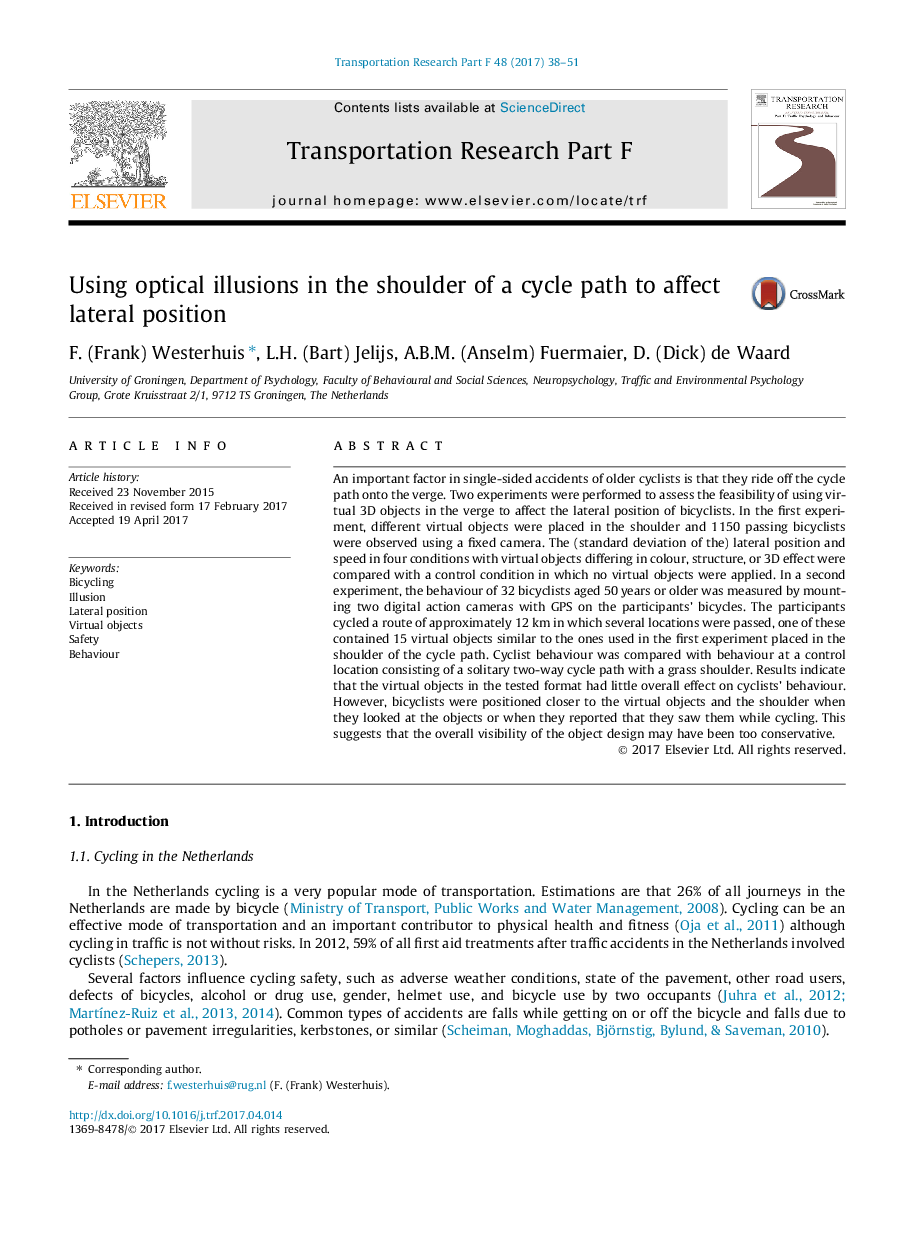ترجمه فارسی عنوان مقاله
استفاده از توهمات نوری در شانه یک مسیر چرخه برای تاثیر موقعیت جانبی
عنوان انگلیسی
Using optical illusions in the shoulder of a cycle path to affect lateral position
| کد مقاله | سال انتشار | تعداد صفحات مقاله انگلیسی |
|---|---|---|
| 123128 | 2017 | 14 صفحه PDF |
منبع

Publisher : Elsevier - Science Direct (الزویر - ساینس دایرکت)
Journal : Transportation Research Part F: Traffic Psychology and Behaviour, Volume 48, July 2017, Pages 38-51
ترجمه کلمات کلیدی
دوچرخه سواری، توهم موقعیت جانبی، اشیاء مجازی، ایمنی، رفتار - اخلاق،
کلمات کلیدی انگلیسی
Bicycling; Illusion; Lateral position; Virtual objects; Safety; Behaviour;

